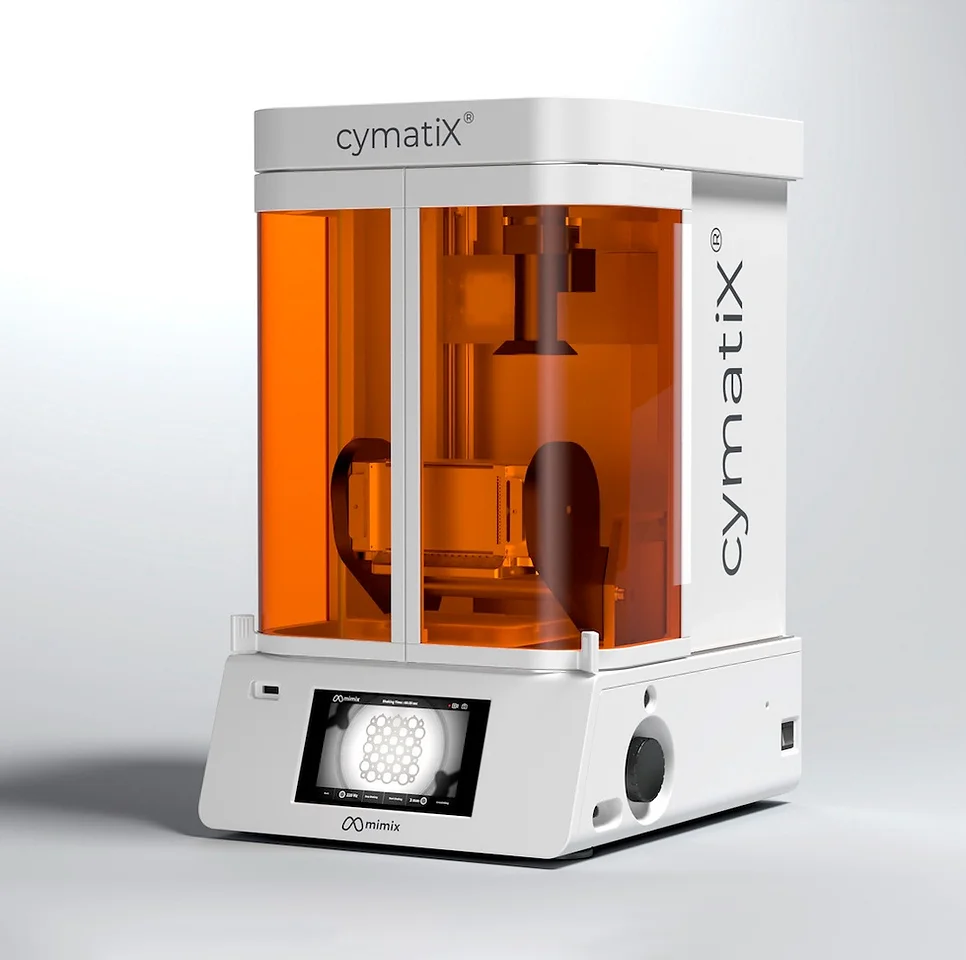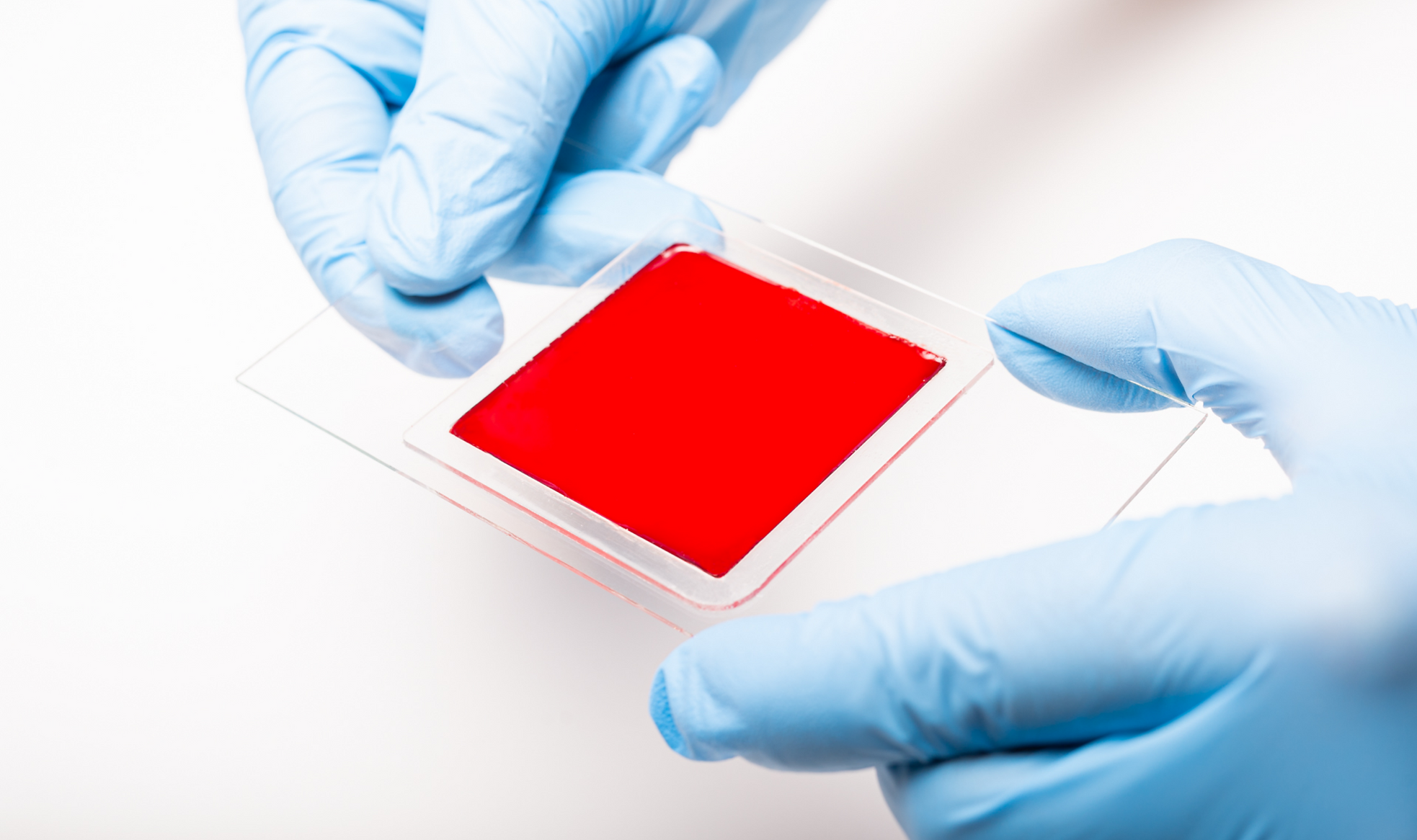MimiX Biotherapeutics, a Swiss startup that developed sound-induced bioprinting, has announced the launch of a new funding round in January 2023 to accelerate the clinical translation of its proprietary FastSkin tissue, an advanced dermal substitute for acute and chronic wound treatment.
Through a combination of micrografting (micro-scale biological tissue entities obtained from a biopsy of healthy skin) with its proprietary Sound Induced Morphogenesis (SIM) technology, mimiX wants to improve wound care management. According to the company, its FastSkin product addresses a major social burden and unmet clinical need in oncology and chronic wound treatments. Although still in the process of obtaining the necessary U.S. market clearances, FastSkin could provide new therapeutic opportunities to treat complex wounds that fail to respond to conventional treatments promptly.
 mimiX Biotherapeutics SIM-Discovery tool, the cymatiX. Image courtesy of mimiX Biotherapeutics.
mimiX Biotherapeutics SIM-Discovery tool, the cymatiX. Image courtesy of mimiX Biotherapeutics.To mimiX Founder, CEO and Chairman Marc Thurner, “FastSkin is a major advance in personalized regenerative medicine, opening the door to new treatment options while increasing patient accessibility.”
A veteran in the bioprinting industry, Thurner was also behind the creation of regenHu, a Swiss-based biotech startup well known for developing biomedical products for regenerative medicine and drug discovery. After spending the last fifteen years immersed in bioprinting know-how, Thurner wanted to accelerate the biofabrication revolution in healthcare. And, for that to happen, he turned to acoustic waves.
During an interview with Thurner back in 2019, 3DPrint.com found out that his view of bioprinting had changed dramatically since leaving regenHu. According to the executive, bioprinting companies rely on conventional extrusion systems, a tool he says is “great for scientific research” but will probably “never translate into clinical.”
Instead, mimiX’s new SIM technology allows to pattern biological material such as cells, organoids, or tissue fragments into three-dimensional constructs that develop into engineered tissues, like microvascular networks, states the firm. To turn his vision into a reality, mimiX has embedded its base SIM technology into a discovery platform called cymatiX, which is helpful for many applications, from life sciences to drug development, cellular agriculture, and performance materials.
With the objective of creating well-defined biological patterns that self-assemble into functional tissues using sound waves, SIM is being used to reproduce what the company describes as “the fundamental steps of nature’s design strategy: condensing bioactives and pattern formation control.”
Set out to tap a global skin cancer treatment market that is projected to reach $14.5 billion by 2031, mimiX created FastSkin. The brand believes that increased demand for advanced wound care has led it to accelerate the U.S. market clearance and commercial launch of FastSkin.
 FastSkin graft. Image courtesy of mimiX Biotherapeutics.
FastSkin graft. Image courtesy of mimiX Biotherapeutics.Once approved, mimiX believes FastSkin will become a dermal substitute produced during wound-dressing sessions at point-of-care obtained from the same individual. That is, both the patient’s blood and skin biopsy are used to create the micrograft that will then be applied at the wound site. The company says its dermal substitute “harnesses the power of micrografts” and will only be applied to the wound by surgeons or specialized wound-care nurses.
MimiX explains that for the process to work; there is an “inside to outside” wound healing pattern. Each micrograft acts as “a living island triggering local regeneration and enhancing closing of the wound surface with an autologous skin layer.”
 FastSkin process. Image courtesy of mimiX Biotherapeutics.
FastSkin process. Image courtesy of mimiX Biotherapeutics.Each individual micrograft (between 200 and 400 micrometers or 0.2 to 0.4 millimeters) is a living piece of skin tissue equipped with a pre-vascularized system that “kicks” the local surrounding tissue for regeneration. First, the cells contained in the micrografts proliferate out and populate the surrounding extracellular matrix. Then, once encapsulated during grafting time in the blood clot, they access nutrients, platelets, and proteins that help the wound heal.
Previous financing rounds have brought on board investors such as Heraeus and the AO Foundation, as well as private investors like Venture Kicks, but this round could attract a broader spectrum of venture capital, primarily since mimiX now has published its work in at least six major publications; expanded its list of potential applications for its SIM-based platform technology to include in vitro models to study pain and stable vascular structures and has several new research partners, such as the University of Utah and the U.S. Department of Veterans Affairs (or VA Healthcare).
Subscribe to Our Email Newsletter
Stay up-to-date on all the latest news from the 3D printing industry and receive information and offers from third party vendors.
Print Services
Upload your 3D Models and get them printed quickly and efficiently.
You May Also Like
Creality To Go Public
Creality is one of the largest 3D printing companies in the world. It probably ships more 3D Printers than anyone else. In a competitive market, the company has gone from...
Chitu Systems and the FilaPartner E1: “Moisture Control for Better Prints”
Moisture may not sound like a big deal, but in FDM 3D printing, it can ruin a print. Filaments absorb water from the air, and once that moisture hits the...
3D Printing News Briefs, July 31, 2025: Falcon A1 Pro Launch, Kickstarter 3D Printer, & More
Today’s 3D Printing News Briefs is all about new products! We’ll tell you about some new components and machines related to additive, as well as a new 3D printer on...
Singapore’s Famous Merlion Statue Now a 3D Printed Toy Made From Plastic Bottles
Singapore’s iconic Merlion, a half-lion, half-fish statue by the waterfront at Merlion Park, is a favorite with both locals and tourists. Now, Singapore design brand Uniplay (a sustainable art toy...





























